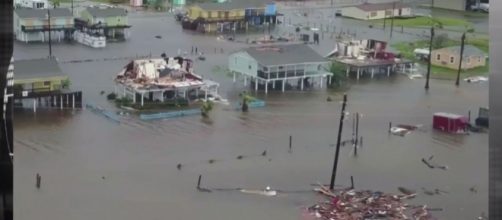For 12 years, no major hurricane has had the dubious honor of making complete landfall in the United States, not since Hurricane Wilma in 2005, the same year as a terrifying Katrina. Other hurricanes since may have brushed along parts of the East Coast and nearby, but for the most part, none have approached the limits of infrastructural devastation like that of New Orleans under Katrina. That spell has since been broken with the arrival of Hurricane Harvey, which made landfall in the State of Texas last Friday. Of late, Harvey had just come and gone from the city of Houston, which received a walloping not seen since New Orleans in the past decade.
Difficult rescues
By the afternoon of August 27, Hurricane Harvey has flooded the Greater Houston area with an estimated 9 trillion gallons of rainwater. The Coast Guard soon found itself inundated as well, with an average of 1,000 incoming calls for rescue every hour, according to USCG Lt. Mike Hart in a statement the following day. He did report that the Coast Guard managed upwards of 3,000 rescues that Sunday, both by emergency boats and helicopter. The Houston Fire Department also received 2,300 similar calls since midnight, will 400 more by the afternoon of Monday, August 28.
City officials of Houston report that at the latest, four people in the area have been killed in the deluge wrought by Hurricane Harvey.
The rising floodwaters have made stranded residents increasingly panicky. There were reports that some of them went so far as to shoot at rescue boats plying the submerged streets in order to catch their attention. Such was the desperation palpable in many a Houstonian that at one point, they even attempted to steal a broken-down rescue boat that had been abandoned by its crew of Cajun Navy rescue volunteers.
‘Landmark’ event
The quick flooding of Houston and surrounding population centers in Texas was further exacerbated by a massive storm surge, a wall of waters rising from the coast to the southeast that plowed through the state’s barrier islands to flood further inland. Federal Emergency Management Agency director Brock Long went so far as to describe Hurricane Harvey as a “landmark” event, one that could lay low Texas for years to come.
On the Federal level, “rapid action” from Congress is being promised by President Donald Trump for Texas. The President, apparently trying to do damage control to a badly-timed political announcement, spoke highly of the determination of both the people of Houston trying to survive and the rescue workers on the scene, helping them evacuate. President Trump then assured Texans that they would get disaster relief funding as soon as possible.


